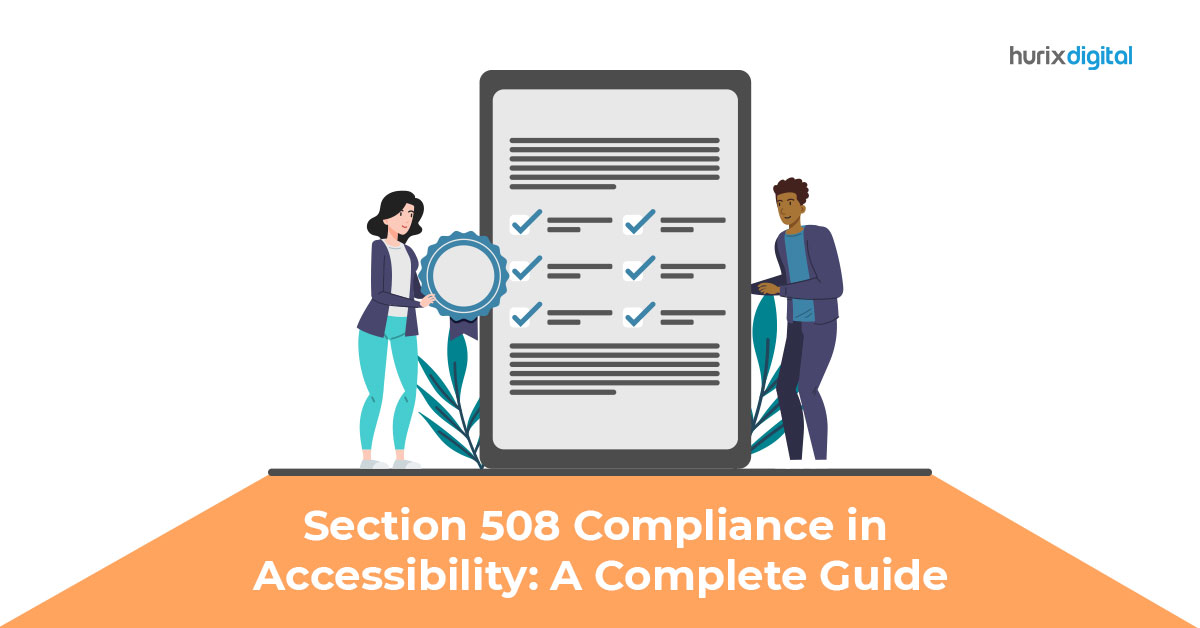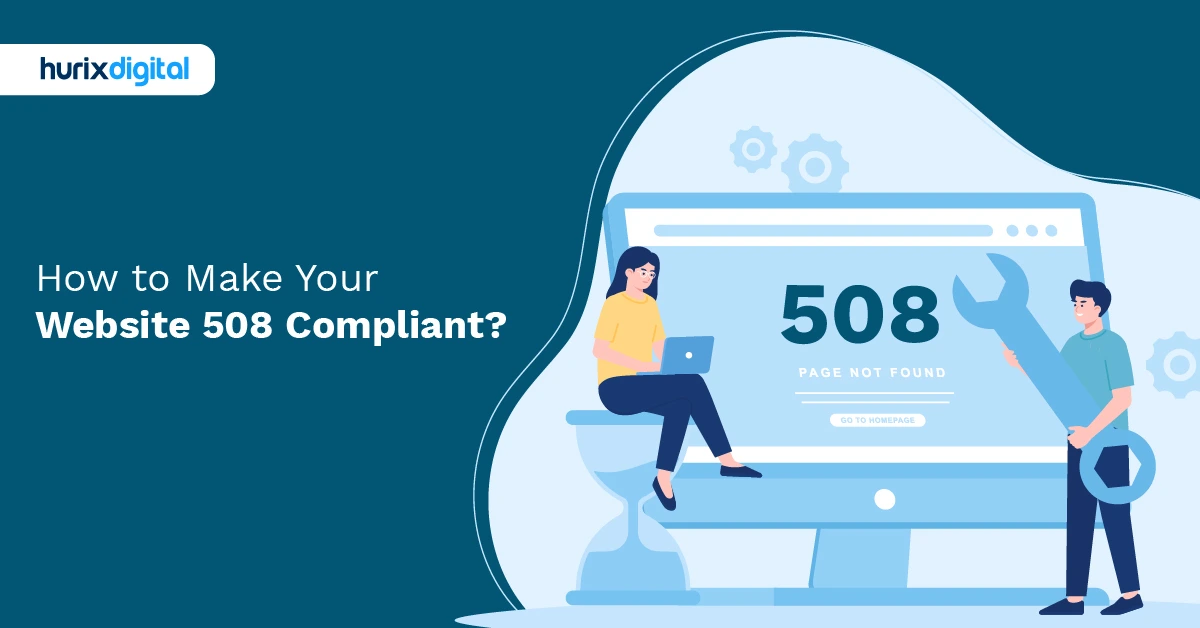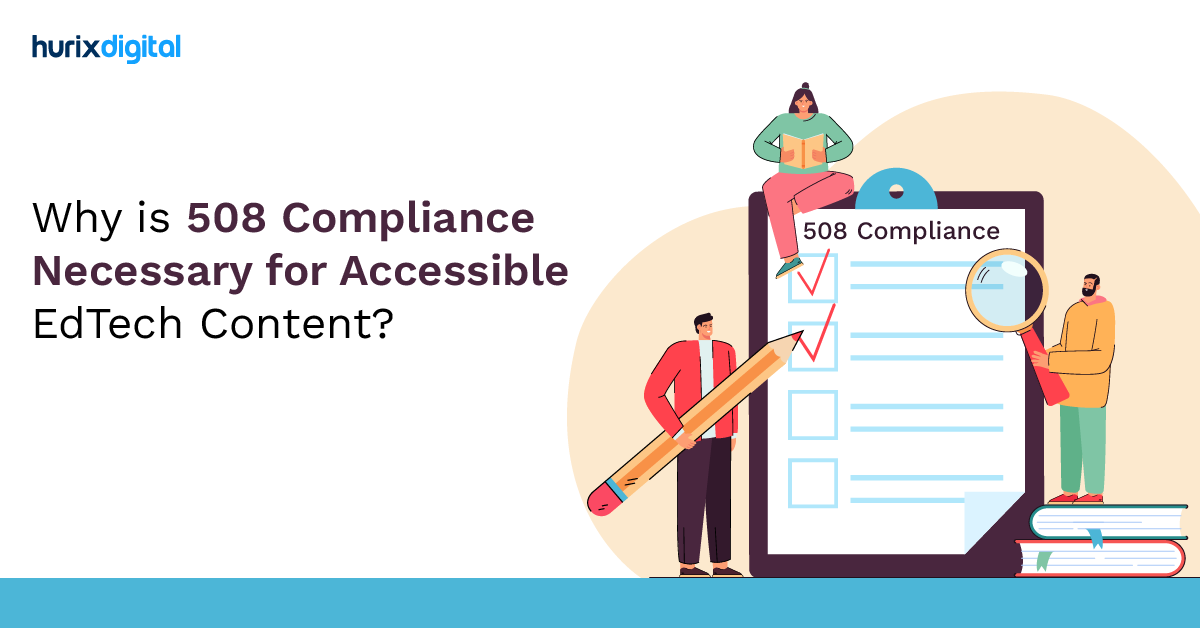
Section 508 Compliance in Accessibility: A Complete Guide
Summarize with:
Section 508 compliance in accessibility is a critical aspect of web development and design. It ensures that individuals with disabilities have equal access to electronic information and technology (EIT).
Unfortunately, statistics have shown that as of 2022, 96.8% of all home pages had some form of failure with web accessibility requirements. This is an alarming statistic because it means that just over 3% of all web pages are accessible to people with disabilities.
For businesses, this also means that you are losing out on a vast number of potential customers. Thus, this guide will explore the basics of Section 508 compliance, including what it is, why it’s essential, and how to ensure compliance on your website.
Table of Contents:
- What is Web Accessibility, and Why Do We Need it?
- What is Section 508?
- How to be Section 508 Compliant?
- Are there any Exemptions?
- What are the Penalties for Not Being a Section 508 Complaint?
- Conclusion
What is Web Accessibility, and Why Do We Need it?
Web accessibility, simply put, means making websites, web applications, and digital content usable for people with disabilities. This includes individuals with any visual or hearing disabilities, individuals with cognitive or neurological disabilities, and individuals with mobility impairments.
Web accessibility involves creating websites that can be easily navigated and understood by assistive technologies such as screen readers and keyboard-only users. It also involves using clear and straightforward language, providing alternative text for images, and designing forms that can be easily filled out for anyone with any disability.
There are several reasons why web accessibility is essential. Firstly, it ensures that individuals with disabilities have equal access to digital information and technology. This is important because the internet has become a fundamental part of modern life, and everyone must have equal access to it.
Secondly, web accessibility helps create a more inclusive and diverse digital environment. This is important because it ensures that everyone, regardless of their abilities, can be a part of the digital era and enjoy its perks, such as shopping, online banking, socializing, and so on.
Finally, it is a legal requirement in many countries, and failure to comply with web accessibility regulations can result in penalties and legal action.
What is Section 508?
Section 508, a federal law in the United States, requires electronic information and technology to be accessible to people with disabilities. This includes websites, applications, and other digital content.
The law was passed in 1998 as an amendment to the Rehabilitation Act of 1973 and applies to all federal agencies and organizations that receive federal funding.
The primary goal of Section 508 compliance in accessibility is to make certain that individuals with disabilities have equal access to electronic information and technology. This includes providing that digital content is readable and understandable by screen readers, that images have alternative text, and that forms are easy to navigate.
Section 508’s Standards for Electronic and Information Technology (EIT) provide guidelines on how to make web content, software, hardware, and other I.T. products accessible to people with disabilities, including people with visual, auditory, physical, and cognitive disabilities.
The law also requires that any software, hardware, and other information technology systems or services developed, procured, maintained, or used by federal agencies must be accessible to people with disabilities unless an undue burden would be imposed on the entity.
Also Read: Everything to Know About Section 508 Compliance Testing
How to be Section 508 Compliant?
Ensuring Section 508 compliance in accessibility on your website or application involves a combination of technical and organizational measures. Here are some critical steps to take to ensure compliance:
- Understand the requirements: Familiarize yourself with the Section 508 standards and guidelines for electronic and information technology.
- Conduct an accessibility audit: A thorough accessibility audit will help identify potential issues with your website or application.
- Develop an accessibility plan: Develop a plan that outlines the steps your organization will take to ensure compliance.
- Use accessibility testing tools: Several tools can help you test your website or application for accessibility issues. These tools can identify potential problems and provide recommendations for how to fix them.
- Train your staff: It is vital to ensure that your team is trained on accessibility and how to ensure compliance. This includes training on the use of accessibility testing tools and the procedures outlined in your accessibility plan.
- Continuously monitor and test: Regularly test and monitor your website or application for accessibility issues and fix any identified issues.
- Incorporate accessibility in your development process: Incorporate accessibility best practices and guidelines in your development process, making accessibility an integral part of your development process.
By following these steps and making accessibility an integral part of your development process, you can ensure compliance with Section 508 and provide equal access to digital information and technology for people with disabilities.
Also Read: What is Section 508 and Why Does it Matter?
Is Anyone Exempt from Complying with Section 508 Compliance in Accessibility?
Section 508 compliance in accessibility applies to all federal agencies and organizations that receive federal funding. However, there are a few exceptions to this rule.
The law includes a provision that allows federal agencies to claim an undue burden as an exception to the requirement to make their electronic information and technology accessible.
An undue burden is defined as a significant difficulty or expense determined on a case-by-case basis, considering factors such as the nature and cost of the action needed, the impact on the agency’s operations, and the available resources.
In addition, some small businesses and non-profit organizations may also be exempt from Section 508 if they can demonstrate that compliance would cause undue hardship. However, this exemption is rare and should be applied only in limited circumstances.
It’s worth noting that other countries may have different regulations and laws that apply to accessibility, and these may have various exemptions and criteria.
Also Read: How to Make Your Website 508 Compliant?
What are the Penalties for Not Being a Section 508 Complaint?
Failure to comply with Section 508 can result in penalties and legal action. The sentences will depend on the circumstances of the non-compliance and the agency or organization involved.
For federal agencies, non-compliance with Section 508 can result in suspension or termination of funding, legal action, and fines. In addition, the U.S. Access Board, the agency responsible for enforcing Section 508, can take enforcement actions such as issuing formal complaints and seeking injunctive relief.
Noncompliance can result in the loss of funding or contracts and legal action for private organizations and entities that receive federal funding. Organizations can also face a lawsuit from individuals affected by the non-compliance.
In addition to these penalties, non-compliance with Section 508 can also result in negative publicity and damage to an organization’s reputation.
It’s important to note that being compliant with Section 508 is not only a legal requirement but also a moral one, as it helps ensure that individuals with disabilities have equal access to digital information and technology.
Summing it up
Section 508 compliance is an important aspect of web development and design. Organizations should strive to create EIT that is accessible and usable for all users as it helps create a more inclusive digital environment.
Yes, it is a legal requirement as well as and failure to comply with it could land you in a lot of legal trouble. That being said, web accessibility for all should be a priority for everyone alike because simply put, it’s the right thing to do.
At Hurix Digital, we understand the importance of creating digital content that is accessible to everyone, including people with disabilities. That’s why we offer an array of accessibility solutions that are designed to help organizations comply with Section 508 and other accessibility standards.
Our team has the knowledge and experience to help organizations identify and fix accessibility issues in their digital content, ensuring that it is usable, understandable, and navigable for all users.
Don’t let accessibility issues hold you back. Contact Hurix Digital today and find out how we can help you make your digital content accessible to everyone!
Frequently Asked Questions (FAQs)
Q1: What’s the difference between 508 and WCAG?
A1: 508 is legal (U.S. federal), while WCAG is a technical standard globally followed.
Q2: Can 508 be self-certified?
A2: Yes—with a VPAT and proper audit, organizations can declare their 508 status.
Q3: Do PDFs need 508 compliance?
A3: Yes—tagged PDFs, readable structure, and navigable elements are required.
Q4: Is mobile content covered under 508?
A4: Yes—mobile apps and responsive websites must meet accessibility standards.
Q5: Are there exceptions to 508 rules?
A5: Exceptions include legacy systems and unalterable archived content, but require documentation.
Summarize with:

 A Space for Thoughtful
A Space for Thoughtful 

